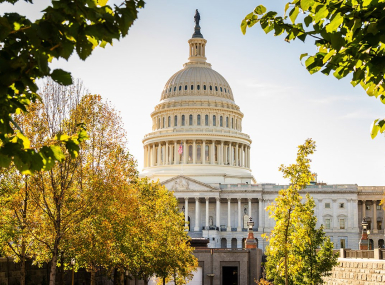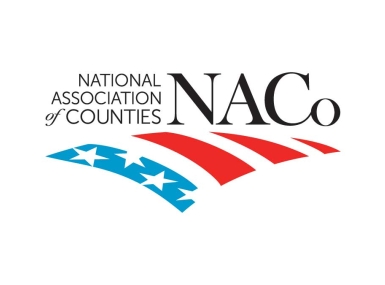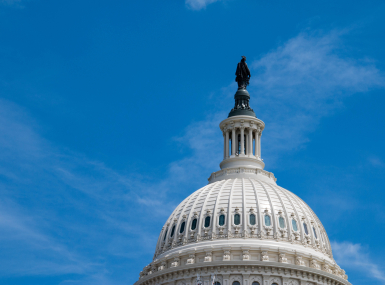Legislative Analysis for Counties: State, Local, Tribal and Territorial Fiscal Recovery, Infrastructure And Disaster Relief Flexibility Act

Upcoming Events
Related News
On December 23, the U.S. Congress enacted the bipartisan State, Local, Tribal, and Territorial Fiscal Recovery, Infrastructure, and Disaster Relief Flexibility Act as an amendment to the Fiscal Year (FY) 2023 omnibus appropriations bill. The amendment, which was championed by Senators John Cornyn (R-Texas) and Alex Padilla (D-Calif.) provides additional flexibility for the $350 billion Coronavirus State and Local Fiscal Recovery Fund (Recovery Fund) authorized under the American Rescue Plan Act (ARPA), including infrastructure, community development, and disaster response. It will also provide the U.S. Treasury with much-needed resources to assist counties in deploying recovery funds.
Counties have supported this bill and advocated for its passage since it was first introduced and passed the U.S. Senate by unanimous consent in October 2021. NACo sent a letter to congressional leadership urging swift passage of the bill as part of a year-end spending package.
Counties nationwide will now be able to use a total of over $27 billion for new transportation and infrastructure projects, over $17 billion for government services and ARPA funds to respond to the impacts of natural disasters and invest in Community Development Block Grant (CDBG)-eligible projects. The amendment additionally expands eligibility of consolidated city-county governments to receive payments from the ARPA Local Assistance and Tribal Consistency Fund (LATCF).
This analysis provides an overview of key provisions included in the Cornyn/Padilla amendment and how they will impact county governments.
Key Highlights
- Permits counties to invest the greater of $10 million or 30 percent of their total ARPA Fiscal Recovery Fund allocation on new infrastructure-related and natural disaster response activities and Community Development Block Grant projects
- Codifies the standard allowance included in the US Department of Treasury’s Final Rule that allows counties to invest up to $10 million for the provision of government services without having to go through a complicated “revenue loss” calculation
- Expands eligibility to receive payments from the Local Assistance and Tribal Consistency Fund (LATCF) to include consolidated city-county governments
- Unlocks administrative funds for the US Department of the Treasury to continue working with counties to implement this historic investment
- The bill does not increase spending and does not place mandates on how counties can spend their Recovery Funds
- Requires the US Department of Treasury and US Department of Transportation secretaries to report to Congress on the use of relief funds to ensure accountability
- Clarifies existing allocations set aside at the US Department of Treasury for tribal governments and ensures they receive funding delayed by legal barriers over the last year
- Allows a county that received less than $10 million in ARPA Recovery Funds to consider the entire allocation as flexible for use toward a broad range of infrastructure projects outlined in the legislation
Allocation Estimates
View your county's ARPA Flexible Fund allocation under S. 3011
Overview of Provisions
The Recovery Fund, which NACo helped develop and strongly advocated for its passage, is a historic investment in our nation’s counties. These funds provide direct, flexible aid for every county, parish and borough in America.
The legislation strengthens the Recovery Fund in the following ways, which ensures our nation’s recovery COVID-19 continues:
The bill allows counties to use the greater of $10 million or 30 percent of their ARPA Recovery Fund allocation for a wide variety of transportation infrastructure projects, including:
National Highway Performance Program Bridge Investment Program Surface Transportation Block Grant Program Metropolitan Transportation Planning Highway Safety Improvement Program Congestion Mitigation and Air Quality Improvement Program Territorial and Puerto Rico Highway Program National Highway Freight Program Rural Surface Transportation Grant Program Carbon Reduction Program PROTECT Program Alternative Fueling Infrastructure Federal Lands Transportation Program Federal Lands Access Program RAISE Grant Program ADHS Program Urbanized Area Formula Grants Formula Grants for Rural Areas State of Good Repair Grants Grants for Buses and Bus Facilities National Culvert Removal, Replacement, and Restoration Program Community Development Block Grant Bridge Replacement, Rehabilitation, Preservation, Protection, and Construction Program Tribal Transportation Program |
Counties are also able to use Recovery Funds under this section to meet local match requirements for the following:
- Nationally Significant Freight and Highway Projects Program
- Transportation Infrastructure Finance Improvement Act (TIFIA) Loan Program – in addition to satisfying the TIFIA local match requirement, these funds could also be used to repay a TIFIA loan
- Fixed Guideway Capital Investment Grant Program
- National Infrastructure Project Assistance (new competitive program for which counties would be directly eligible if the program is established through the enactment of the Infrastructure Investment and Jobs Act (H.R. 3684)
Notably, counties are prohibited under this section from using ARPA Recovery Funds for operating expenses. Additionally, ARPA Recovery Funds invested in these newly eligible infrastructure-related projects will still need to be obligated by December 31, 2024, but expended by September 30, 2026.
The bill allows counties to consider up to $10 million of their ARPA Recovery Fund allocation as if it were “lost revenue” that could be used toward the provision of government services including but not limited to:
- Maintenance of infrastructure
- Pay-go funded construction of infrastructure, such as roads (pay-go refers to “paying-as-you-go” or utilizing current revenue rather than borrowing against it, ex. by issuing a bond)
- Modernization of cybersecurity, including hardware, software and protection of critical infrastructure
- Healthcare services
- Environmental remediation
- School or educational services
- Provision of police, fire and other public safety services
Counties are not allowed to use these funds towards the following:
- Rainy day/reserve funds
- Legal settlements
- Pension obligations
- Debt payments
The provision assists smaller counties in complying with program requirements.
After the initial introduction of this legislation, NACo secured the inclusion of this provision in the U.S. Treasury's Final Rule for the ARPA Recovery Fund.
In addition to using Recovery Funds for new transportation and infrastructure projects, the amendment allows counties to use funds to invest in projects authorized under the Community Development Block Grant (CDBG) program. As with transportation and infrastructure projects, counties may use up to $10 million or 30 percent, whichever is greater, of their total Recovery fund allocation for these activities.
If a county decides to use Recovery Funds for projects authorized under CDBG, the activities must meet the requirements put forth under title I of the Housing and Community Development Act of 1974, which established the CDBG program.
In response to the US Department of Treasury’s Interim Final Rule for the Recovery Fund, NACo strongly urged that CDBG expenditures be included as eligible uses of Recovery Funds.
The CDBG program provides critical funding to counties to improve local communities and serve our most vulnerable residents. Counties utilize the flexibility of CDBG funds to support projects that meet their local priorities in addressing community and economic development, housing, water and infrastructure and human service needs while creating jobs through the expansion and retention of businesses.
As part of the State and Local Fiscal Recovery Fund, the ARPA authorized the $2 billion Local Assistance and Tribal Consistency Fund (the Fund), which provided $1.5 billion in direct funds to revenue share (i.e., public lands) counties.
The Cornyn/Padilla amendment makes important clarifications to the implementation of the Fund by ensuring consolidated governments with federal lands within their jurisdiction, such as consolidated city-county governments, will now be eligible for LATCF payments. It also protects payment amounts to previously eligible revenue-sharing counties, ensuring they will not be negatively impacted by payments to newly eligible consolidated local governments.
The bill allows counties to use ARPA Recovery Funds toward emergency relief services to address natural disasters or the negative economic impacts of natural disasters, including temporary emergency housing, food assistance, financial assistance for lost wages, or other immediate needs.
The bill unlocks unobligated funds allocated to Treasury for administrative expenses related to operating the Recovery Fund and allow Treasury to continue to work with counties to implement these funds. Since the enactment of ARPA, NACo has been working tirelessly with Treasury to ensure Recovery Funds have the flexibility to properly address the unique needs of counties and allow counties to fulfill their role as sound financial stewards.
On October 14, counties and other recipients of the American Rescue Plan Act (ARPA) Recovery Funds, including the State and Local Fiscal Recovery Fund, Local Assistance and Tribal Consistency Fund (LATCF) and Emergency Rental Assistance (ERA) program, received an email alerting them that Treasury’s contact center would no longer be able to respond to phone calls and that Treasury would be further ramping down staff support for the contact center.
This scaleback was due to a shortfall in administrative funding for ARPA recovery programs, however passage of the Cornyn/Padilla amendment will allow Treasury to continue working with counties to successfully implement this historic investment in our communities.
About text formats Call to Action You have unsaved changes on this Paragraph item. Allocation Estimates, View your county's ARPA Flexible Fund allocation under S. 3011, Access Allocation Estimates Toggle Actions Published Last saved 10/17/2023 - 09:14 Author Create new revision Revision log message Briefly describe the changes you have made. Delete Exclude From Search Meta Tags Bookmark URL redirects XML Sitemap URL alias Alias: /resources/featured/legislative-analysis-counties-state-local-tribal-and-territorial-fiscal-recovery Generate automatic URL alias Uncheck this to create a custom alias below. Configure URL alias patterns. URL alias /resources/featured/legislative-analysis-counties-state-local-tribal-and-territorial-fiscal-recovery Specify an alternative path by which this data can be accessed. For example, type "/about" when writing an about page.




